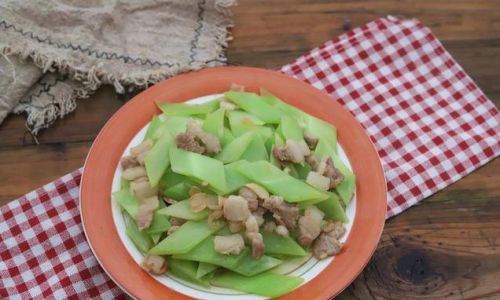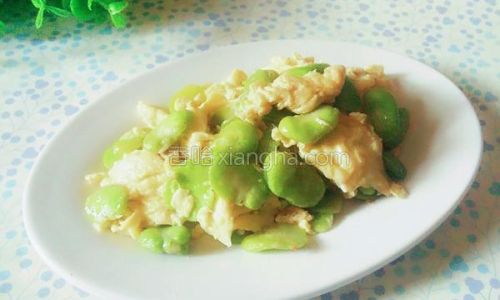Table of content
Scallion omelette, a humble yet beloved dish found across kitchens in Asia and beyond, bridges simplicity and gourmet appeal with its vibrant green scallions and fluffy eggs. This dish, known as cong you jian dan in Chinese, is a staple in households, street food stalls, and even fine dining restaurants. Its beauty lies in its versatility—whether served as a quick breakfast, a side dish for lunch, or a comforting dinner, it never fails to delight. In this comprehensive guide, we will explore the history, ingredients, techniques, and creative twists that elevate this dish from ordinary to extraordinary.
A Brief History of Scallion Omelette
The origins of the scallion omelette trace back centuries, rooted in the culinary traditions of East Asia. Scallions, or green onions, have been cultivated in Asia for over 5,000 years, prized for their mild onion flavor and crisp texture. Eggs, a symbol of fertility and sustenance, were combined with scallions to create a dish that was both nutritious and economical. Over time, the recipe traveled across borders, adapting to local tastes. In Japan, it became negima tamago, while in Korea, it evolved into pa jun (scallion pancake). Despite these variations, the core essence remains: eggs, scallions, and a touch of heat.
Ingredients: The Foundation of Flavor
To craft the perfect scallion omelette, you need only a handful of ingredients, each playing a pivotal role:

- Eggs (4–5 large): The star of the dish, eggs provide structure, richness, and protein. Fresh, free-range eggs yield the best flavor and color.
- Scallions (1 bunch): Choose scallions with firm, bright green stalks and crisp white bulbs. Avoid wilted or yellowing leaves.
- Cooking Oil (2–3 tbsp): Neutral oils like vegetable or canola work best, but sesame oil adds a nutty aroma.
- Salt (½ tsp): Enhances the natural flavors without overpowering the dish.
- Optional Additions:
- White Pepper (¼ tsp): Adds a subtle heat.
- Soy Sauce (1 tsp): For umami depth.
- Chili Flakes: For a spicy kick.
- Cheese or Ham: For a Western twist.
Step-by-Step Preparation
Preparing the Scallions
- Trimming: Slice off the roots and any damaged tips.
- Washing: Rinse thoroughly under cold water to remove dirt.
- Cutting: Finely chop the white and light green parts (reserve the dark green tops for garnish). For texture, cut some scallions into 2-inch batons.
Whisking the Eggs
- In a mixing bowl, crack the eggs and add salt.
- Whisk vigorously until the yolks and whites are fully blended (about 30 seconds).
- Pro Tip: Overwhisking can make the omelette tough; aim for a smooth, frothy consistency.
Combining Scallions and Eggs
- Add the chopped scallions to the eggs.
- Gently fold them in with a spatula, ensuring even distribution.
- Optional: Add white pepper, soy sauce, or other seasonings at this stage.
Cooking the Omelette
- Heating the Pan: Place a non-stick or cast-iron skillet over medium heat. Add oil and swirl to coat.
- Pouring the Mixture: Once the oil shimmers, pour the egg-scallion mixture into the pan.
- Shaping: Tilt the pan to spread the mixture evenly. For a thick, fluffy texture, let it cook undisturbed. For a thinner, crispier result, use a spatula to push the edges toward the center, allowing uncooked egg to flow outward.
- Flipping: When the edges set (2–3 minutes), carefully flip the omelette using a spatula or by tossing it in the pan.
- Finishing: Cook for another 1–2 minutes until golden brown.
Serving Suggestions
- Classic Style: Slide the omelette onto a plate, garnish with reserved scallion tops, and serve with steamed rice.
- Wrap It Up: Use the omelette as a filling for tortillas or roti.
- Breakfast Bowl: Pair with avocado slices, cherry tomatoes, and a drizzle of sriracha.
Mastering Advanced Techniques
Achieving the Perfect Texture
- Fluffy Omelette: Use a higher heat and cook for a shorter time. The eggs should be slightly runny in the center.
- Crispy Edges: Cook over low heat for longer, allowing the scallions to caramelize.
Creative Variations
- Cheese Lover’s Delight: Sprinkle shredded cheddar or Parmesan over the omelette before flipping.
- Seafood Twist: Add cooked shrimp or crab meat to the egg mixture.
- Vegetarian Upgrade: Mix in diced bell peppers, mushrooms, or spinach.
Troubleshooting Common Issues
- Omelette Sticking to the Pan: Ensure the pan is properly seasoned (for cast iron) or use a non-stick skillet.
- Soggy Texture: Avoid overcrowding the pan; cook in batches if needed.
- Burnt Scallions: Add the scallions to the eggs just before cooking to prevent them from wilting.
Cultural Significance and Modern Adaptations
The scallion omelette transcends cultural boundaries, appearing in fusion cuisines worldwide. In Singapore, it’s a popular hawker dish served with chili sauce. In the U.S., chefs experiment with gourmet versions, incorporating truffle oil or quail eggs. Home cooks, meanwhile, appreciate its adaptability—it’s equally delicious wrapped in a bento box or as a late-night snack.
Health Benefits of Scallion Omelette
Beyond its culinary appeal, this dish offers nutritional perks:

- Eggs: Rich in protein, vitamins B12 and D, and choline (essential for brain health).
- Scallions: Packed with antioxidants, vitamin K, and fiber.
- Low in Calories: A single serving contains approximately 150–200 calories, making it a guilt-free indulgence.
Sustainability Tip: Grow Your Own Scallions
Scallions are among the easiest herbs to regrow. Place the roots in a glass of water, and within days, you’ll have fresh greens. Transfer them to soil for a continuous supply!
Conclusion: The Joy of Simplicity
The scallion omelette is more than a meal—it’s a testament to the magic of minimalism. With just eggs, scallions, and a spark of creativity, you can create a dish that nourishes the body and soothes the soul. Whether you’re a novice cook or a seasoned chef, mastering this recipe opens doors to endless culinary exploration. So, crack those eggs, chop those scallions, and let the sizzle of the pan transport you to a world where simplicity reigns supreme.

Final Thought: The next time you find yourself wondering what to cook, remember that sometimes, the most extraordinary flavors hide in the simplest of ingredients. Happy cooking!





0 comments